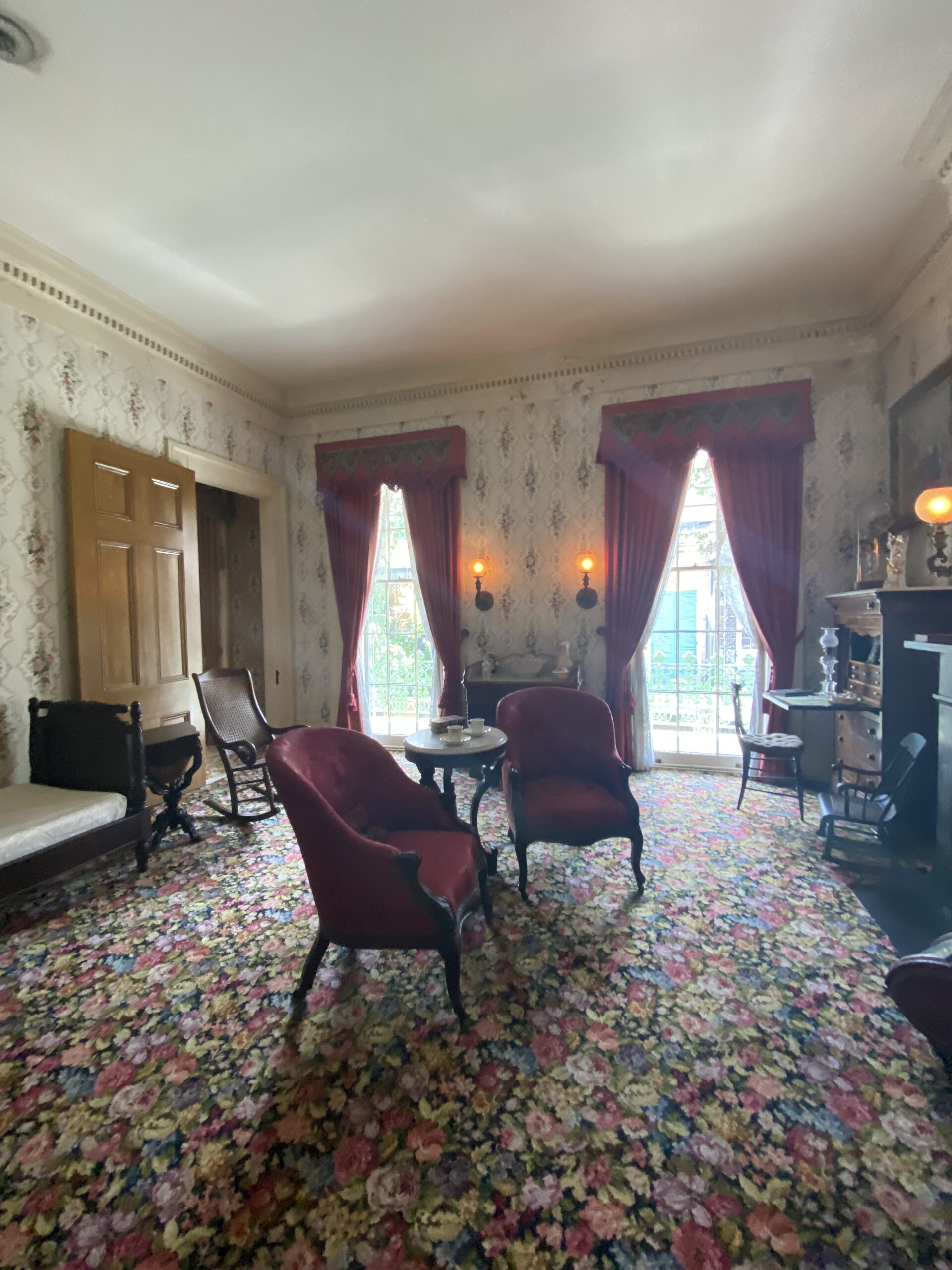

The Herman-Grima House and the Gallier House physically connect us to New Orleans of the early 19th century-a romantic, decadent and mysterious time, a time filled with wealth, culture, slavery, oppression, hurricanes and diseases. Side by side with the affluence of antebellum luxury was an astonishingly stratified society of groups within groups, and with distinction of race, sex, nationality, religion and social standing that were an intricate as any cast system. Finally city’s environment, including unforgiving weather, sticky swamp conditions and rampant urban growth, crated a dramatic backdrop.


The distinctive cast-iron gates at Gallier House. The gates and gallery were painted “Paris Green” to resemble the color of aged copper, the fashionable hue for cast iron in the 19th century.










The Hermann-Grima and Gallier Historic houses are not just important architectural landmarks.Their parlours are much more than just beautiful appointed rooms.They actively tell the story of the men who built them and the challenges they faced, the Free People of Colour and the immigrants who were the craftsmen creating the amazing interiors, and the enslaved workers who ran the day to day business of the homes.





From the upstairs back vestibule, a door opens onto a balcony overlooking the courtyard.Three bedrooms and a washroom occupy the back wing of the upper floor. According, to the 1860 census, four enslaved workers were living at Galllier Hose. Just four years later, as a result of the Civil War, slavery would be abolished. The 1870 census shows that Mrs. Gallier employed three paid servants who lived on the property two were of African descent and one was an Irish woman.

[…] Hermann Grima House and the Gallier House physically connect us to this time.These important landmarks actively tell the local story of the […]